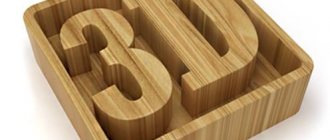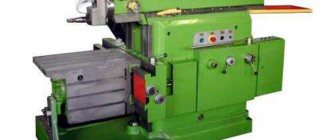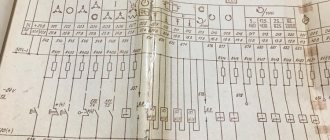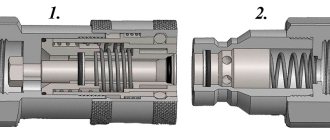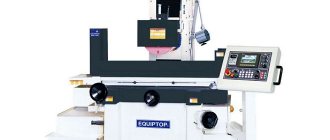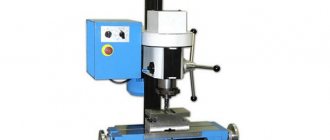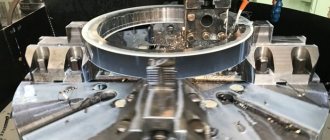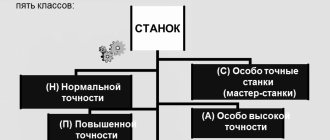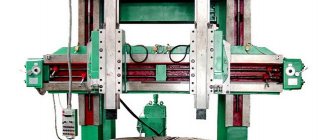Currently, the woodworking industry has made great strides forward. This happened after craftsmen adopted CNC machines for woodworking. Nowadays this is not just a machine bed with precise mechanics, but high-precision automatic machines or even complexes are tens of times higher in productivity, accuracy and quality of processing of products than their predecessors.
CNC machines for wood processing have found their application in the furniture industry, woodworking enterprises, the foundry industry (for the production of casting models and cores), as well as in many design centers.
Design features of the equipment
In most cases, the design of equipment of this type consists of the following components:
- bed – frame (support), it is the foundation;
- a work table, a workpiece is placed on it, and the process of making the model takes place;
- milling head – performs wood processing operations;
- a set of cutters of various configurations;
- milling head transportation system – allows for movements both horizontally and vertically;
- control system unit (CNC) – is an independent system and controls the working parts of the machine in three coordinates. Includes an interface block, three controller blocks (X, Y, Z - machine axes), a USB to LPT signal converter and a power supply. This block allows you to fully automate the process;
- communication system (cables, wires, loops).
Main components of the machine
Machines of this profile allow you to carry out wood processing operations:
- milling;
- boring;
- countersinking;
- engraving.
In addition, they are easy to perform jewelry work on wood thanks to the high precision of the machines and high-quality software.
Reasons to buy from us
We offer a wide range of CNC wood cutting machines. The products are of high quality, long service life and affordable cost. Thanks to it, the risk of manufacturing defects is reduced, the likelihood of errors is completely eliminated, and the accuracy of work is increased. Our employees find an individual approach to each client, answer questions, and provide comfortable ordering conditions. We are constantly in touch; our staff consists of highly qualified specialists with extensive experience. You will definitely be satisfied with contacting our company, because we always try to meet our clients halfway and take into account all requirements and wishes.
Type of equipment
Modern models of CNC machines for working with wood have many modifications and varieties. Their difference lies in the configuration and technical characteristics.
The criteria for choosing equipment are the dimensions and shape of the workpieces being processed, as well as their position during operation of the machine. Therefore, the equipment comes with a rigid installation of the workpiece and the ability to fix the workpiece horizontally or vertically.
Rigid Mounted Milling Machine
At this point, among the varieties of equipment of this type, 2 main types of CNC machines for woodworking should be distinguished:
- Cantilever machines - the design of this type of machine means that the milling head is rigidly fixed and cannot move. But, to compensate for this, the desktop moves. It moves easily both longitudinally and transversely. However, this design has a significant drawback - the limited dimensions of the workpieces being processed.
- Cantileverless machines - the milling head is mounted on a carriage that moves in all directions. Movement is carried out along longitudinal and transverse guides. In addition, movement is also carried out vertically, depending on the type of workpiece.
What CNC woodworking machines can do
Application
A woodworking machine with numerical control is necessary when performing complex work that requires significant labor resources. The device is capable of mass production of components. With their help the following are produced:
- furniture;
- parquet;
- doors;
- decorative elements;
- overlays;
- facades;
- outdoor advertising details.
The milling machine allows you to obtain smaller volume parts with a greater variety of shapes, such as:
- figured spare parts for stairs;
- wooden icons;
- carved frames decorating mirrors, paintings, wall clocks;
- baguettes, overlays, brackets;
- individual furniture components;
- spare parts with artistic carvings.
The characteristics of the manufactured component determine how complex the job will be and how much money will be required to complete it. The most expensive parts are those that are small in size.
CNC control unit
The CNC control unit deserves special attention. It transfers indicators from the control body to the executive body of the machine.
Depending on the number of numerical control functions that need to be performed, the following categories of control unit should be distinguished:
- contour algorithm – moves the milling head according to a given trajectory;
- positional algorithm – provides for installation of the milling head at a given point on the workpiece;
- universal algorithm - includes contour and positional. Monitors the position of the cutter, as well as processing parameters in real time.
These specifications may change when a new CNC unit is installed.
CNC block
Important: when replacing a new unit, it is necessary to check the compatibility of the unit with the operating elements in order to avoid malfunctions in the operation of the equipment.
Technical indicators of equipment
Care should be taken when choosing equipment of this type. To prevent malfunctions of the machine or incorrect assembly, and this is a consequence of incorrect selection of components or subsequent replacement of components, it is necessary to carefully study and become familiar with the characteristics of the components.
The main technical characteristics that must be taken into account when choosing CNC machines for processing wooden workpieces:
- desktop dimensions;
- position of the workpiece during processing;
- idle speed;
- precision of movement of the milling head;
- number of revolutions of the cutter;
- control unit type;
- ventilation and chip removal parameters;
- spindle cooling;
- presence of a rotating head.
But to be able to change the processing parameters of workpieces, the engine power and the rotational speed of the milling head must be adjusted using the CNC control unit.
CNC system
Types of 3-D milling machines
Console model
Despite the general principles of operation, equipment of this type may have different designs. This is due to the specialization of a particular model. Therefore, when choosing, you should conduct a detailed analysis of each of them.
The determining factor is the type of workpiece - flat or three-dimensional workpiece. The location of the working head and the ability to change its position in different planes depend on this. It is also necessary to pay attention to the power of the power plant, the maximum and minimum dimensions of the part.
In addition, there is a conditional division of CNC routers for creating 3D drawings on wood:
- type of processing tool. This could be a laser machine or a finger cutter. In the first case, the quality of workmanship improves, but carbon deposits are formed. Mechanical milling is characterized by a large amount of chips and wood dust;
- desktop design - flat base or turning and milling analogue. The last option is used for processing shapes. The part is fixed between the headstock and tailstock and the pattern is formed using a tool;
- number of processing heads. For amateur and semi-professional equipment there is usually only one. But if mass production is planned, you should purchase models with several heads, preferably a revolving type.
This is a general classification that does not include specialized equipment developed for individual orders. It may have a narrow specialization or, conversely, several additional functions.
Milling may be just one of the operations that can be performed on the equipment. Additionally, it can be used to perform fine engraving on wood or metal.
Operating principle of the equipment
First you need to create a program, according to which the machine will operate. The program is compiled in a special software package. The operation algorithm must take into account the dimensions of the workpiece, methods of moving the milling head, spindle speed, dimensions of the tool used and other parameters necessary for the work.
Then the workpiece is installed and secured. The program is entered and recognized by the equipment. The machine is turned on and a trial operation mode is set.
If there are no malfunctions, the process of processing the wooden workpiece starts in automatic or semi-automatic mode, according to the compiled program. Modes are selected depending on the processing parameters; the program should be adjusted if necessary.
It is worth noting that process automation requires minimal human participation. Its task is to control the technological processing process, adjust the process if necessary and take appropriate actions in the event of failure of equipment components.
The resulting chips and dust are removed by the ventilation system, which is controlled by the control unit.
Working tool used
Particular attention must be paid to the choice of cutters. Machining tool parameters affect the quality and accuracy of the machined part. This equipment mainly uses end mills.
The most widely used tool is the single-thread tool, which is cheap. Often used for soft materials and for parts that do not require high precision processing.
Special tools for wood processing:
- Double-pass - the working part is made in the form of a sphere, used to obtain a smooth surface and high accuracy.
- Spiral - used for final processing of the part. When operating this cutter, fine wood dust is generated, not shavings. This is due to the presence of small teeth on the working part.
- Fishtail style cutters - allow you to mill on both sides, thereby eliminating the appearance of cracks, chips and burrs during processing.
- Engraving cone - cutters of this type are used for jewelry work on wood. Provide high precision in the execution of patterns of varying complexity.
And also, depending on the processing parameters and the workpiece used, an individually designed tool is sometimes used.
CNC machines for woodworking are high-precision, automated equipment. Its capabilities allow you to create not only simple wooden parts, but also the most complex ones, with fine, jewelry-like processing.
Choosing a wood milling machine
Before purchasing equipment, you should decide on its loading and the size of the parts. A desktop model with a mechanical copier is suitable for a home workshop. If you are seriously interested in making unique furniture and for small furniture enterprises, you need to purchase a 3D CNC machine. A large number of exactly identical parts in a short period of time will increase the productivity of the enterprise, and the cost of purchasing a software unit will be recouped.
A cantilever industrial milling unit will pay off only in enterprises for the mass production of large parts, when cutting fiberboard sheets and other elements for furniture and construction.
